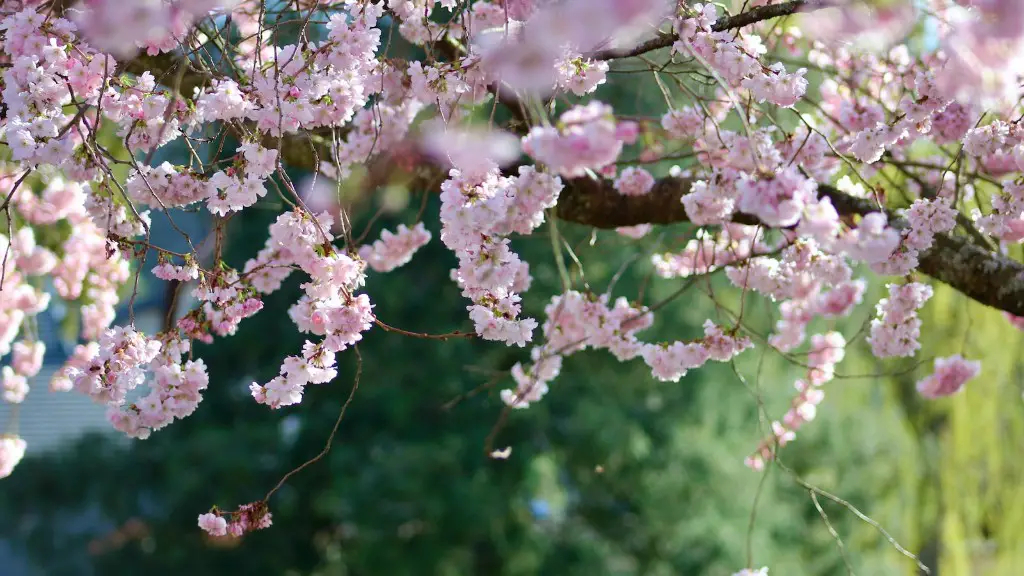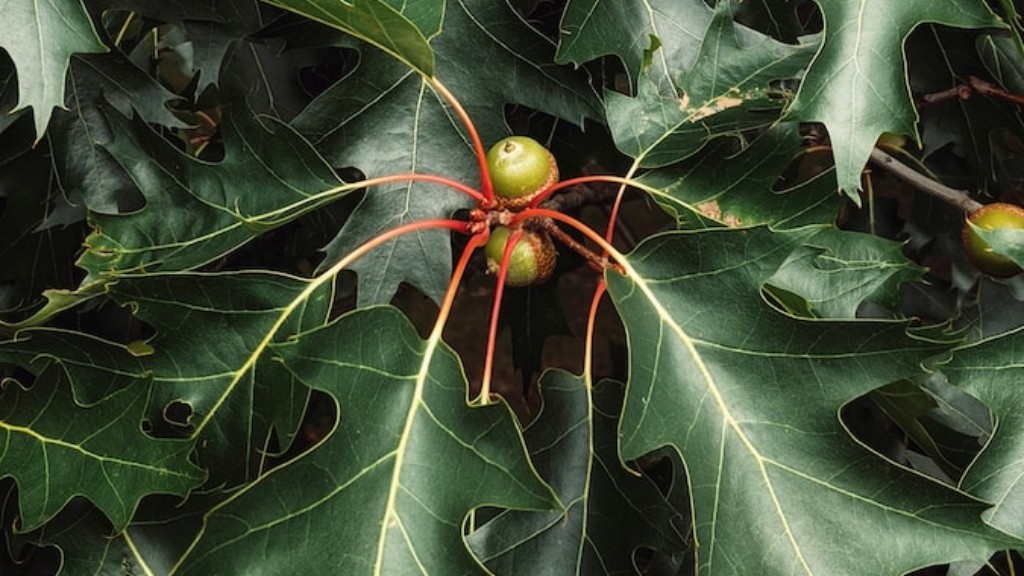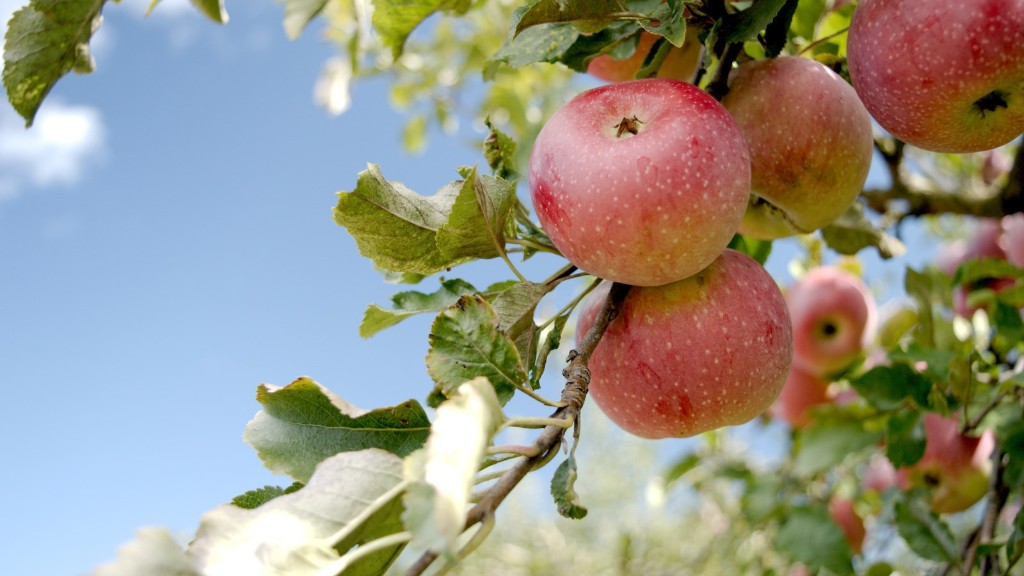Cherry tree planting is an important part of any garden or outdoor area. Many people choose to plant cherry trees because of their beautiful blossoms, bountiful fruit production, and long-term investments in the environment. Knowing when to plant a cherry tree, however, is key for maximum growth and production. There are several important factors to keep in mind, including weather, soil, location, and variety.
In order to establish a successful cherry tree, the weather needs to be warm and remain above freezing during the day. It is important to select a time when the ground is very lightly frozen and warm, as this can leave the tree vulnerable to frost. Many people choose to wait until late spring, when the ground has had time to thaw and the last of the cold temperatures have passed to plant a cherry tree.
The soil quality for cherry tree planting is also critical for optimal growth and should be taken into account before planting. The soil should be well draining and able to hold moisture. A pH level of 6.0 to 6.5 is ideal, as this will provide the tree with the balance of nutrients and minerals it needs. To ensure the best soil quality, organizers recommend tilling the soil to break up any compaction and adding soil amendments such as compost or manure prior to planting.
The location of the cherry tree is also important for successful planting. Cherry trees prefer full sun exposure and ample wind protection. If planting multiple cherry trees, it is important to space them at least 20 to 30 feet apart to give each tree ample room to grow and maintain optimum fruit production. Additionally, cherry trees have shallow roots, so having proper drainage and avoiding low-lying areas is crucial.
Finally, while all cherry trees will require the same basic conditions for planting, it is important to consider the variety of tree you are selecting. Different types of cherry trees will have different tree distances, bloom times, fruiting times, and pruning requirements. To select the best variety of cherry tree for your specific area and needs, professionals advise researching thoroughly and consulting a local expert.
Positioning the Tree
Proper positioning of the tree is also an extremely important part of cherry tree planting. Most cherry trees should be planted at the same depth as they were in their pot. Additionally, the root of the tree should be kept intact and away from any high winds or harsh weather. The tree should also be anchored securely before being left alone, as this will reduce any displacement caused by strong winds.
Organizers suggest using a stake to help support the tree and prevent any movement. The tree should be loosely tied to the stake to allow for vertical movement within the wind. Additionally, a thin layer of mulch should be left around the base of the tree to protect the sensitive root system.
Soil Prepraration
After locating the tree’s position, the soil should be prepped, amended, aerated and watered. This will help ensure healthy growth, better water retention, and plenty of nutrients for the developing tree. Firstly, the soil should be loosened and flattened to provide the root system with a suitable bed for growing. After this, soil amendments such as manure, compost, or mulch can be added.
Organizers suggest using a mixture of two to three inches of soil amendments and two to three inches of existing soil. The existing soil should then be mixed with organic material to allow for aeration. This will help the tree retain water more easily and allows it to regulate its temperature better. Lastly, the soil should be watered generously and left to settle.
Fertilization
Fertilization is also an important part of cherry tree planting. While the tree is establishing itself, a wide array of essential nutrients must be provided in order for it to thrive and produce delicious fruit. Initially, an all-purpose fertilizer should be applied to promote better root and branch development. This should be done in the spring when the weather and soil temperatures start to warm up.
Organizers also advise applying a fruit tree fertilizer once the blossoms have developed and the tree is in full bloom. This will help the cherry tree establish a deep and healthy root system and support the development of fruit.
Lastly, nitrogen fertilizer should be applied throughout the flowering season. This type of fertilizer tends to be higher in nitrogen and is important for providing the tree with the necessary micro and macronutrients for healthy foliage and fruit growth.
Pruning
Pruning is an important part of cherry tree care and is essential for optimal tree health. It is beneficial for controlling the growth of the tree, removing dead branches, and improving fruit production. Pruning should begin when the tree is young, as this will help encourage the growth of healthy branches and avoid any significant pruning issues down the track.
Organizers suggest pruning the cherry tree when it is in full bloom. This will allow the tree to reach its maximum potential and provide the most delicious fruit. Once the sapling reaches maturity, experts advise only pruning out any dead or diseased branches. Pruning should also be done in moderation to avoid over-thinning the foliage.
Watering
As with any tree, watering is also a key part of cherry tree care. The tree must be watered mostly through the spring and summer while fruiting, but the amount of water required will depend on the local climate. In general, organizers recommend providing the cherry tree with enough water to keep the soil moist, but not soggy.
In the spring when the tree is flowering, cherry trees should be watered at least twice a week. The amount of water should be determined by local climate, but usually around 3 to 7 gallons per tree per week should suffice. During periods of intense heat, the amount of watering may need to be increased to ensure that the tree is receiving enough moisture.
Pest Control
The most important part of cherry tree care is pest control. Cherry trees are prone to a variety of insect pests, including mites, aphids, and thrips. Lasting control should be implemented immediately to protect the tree and its produce from any damage caused by pests. This can include using biological pest control methods such as introducing beneficial insects or using natural oils and soaps.
Organizers also suggest using cultural control methods such as pruning to remove any infestations before applying pest control methods. Additionally, providing the tree with proper nutrition, water, and sunlight can help boost its immune system and better resist pests. Finally, chemical controls can be used if the infestation is too severe and the other control measures have not been successful.
Harvesting
On average, cherry trees will start to produce fruit after 3-5 years and then every year thereafter. Once the cherries have ripened, they should be picked as soon as possible to ensure the best flavor and prevent any damage caused by birds or other insects. The cherries usually ripen during late summer and harvesting should be done by hand to avoid any bruising.
Organizers advise harvesting in the early morning when the fruits are still cool and lower in moisture. For best storage, cherries should be kept cool and dry, and stored in airtight containers. Additionally, it is important to refrigerate cherries as soon as possible after picking to maintain their freshness and extend their shelf life.
Conclusion
Planting cherry trees is an excellent way to enjoy delicious fruit for years to come and to provide a beautiful addition to any garden or outdoor area. When planting a cherry tree, the most important factors to keep in mind are the weather, soil, location, and variety. Additionally, proper positioning, soil preparation, fertilization, pruning, watering, and pest control will ensure the health and longevity of the tree. Finally, cherries should be harvested when they have ripened and stored appropriately in airtight containers.




